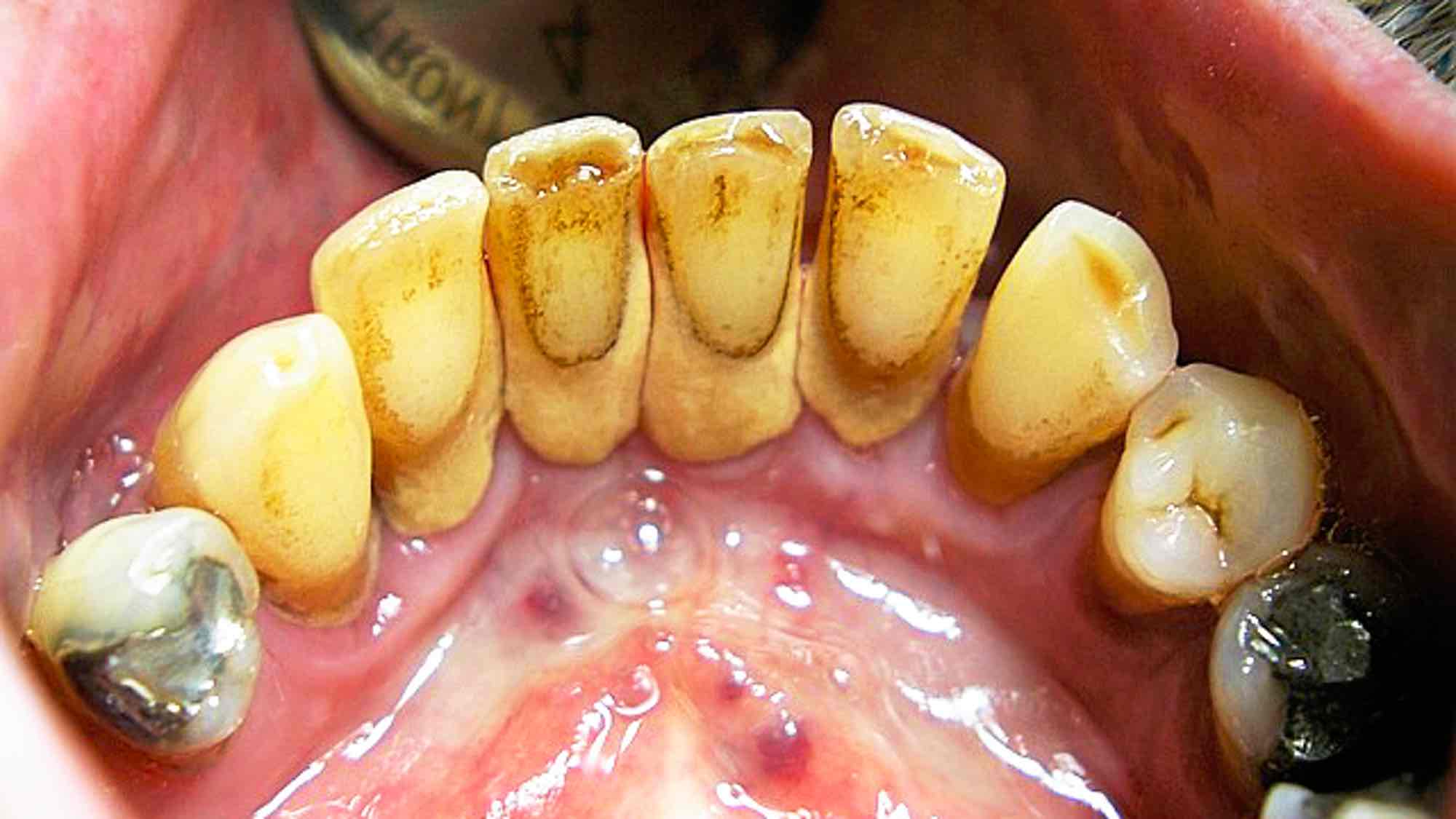Supragingival calculus
What is supragingival calculus?
Supragingival calculus is soft, similar to pumice, and just as rough. The bacteria that cause plaque particularly like to settle on the rough surface. To prevent the plaque bacteria from finding optimal conditions, tartar is removed during a prophylactic appointment.
Many people believe that supragingival calculus can trigger periodontitis, or bone loss. Science thought so too… in the 1960s. So, that was a few days ago. Back then, the service “removing tartar” was added to the list of services and has been maintained to this day. This is completely incomprehensible, because we now know that tartar does not and cannot trigger periodontitis. Removing tartar is more of a cosmetic than a medical factor.
But tartar causes gum inflammation… I can already hear some people shouting at me. Is that true? That’s only partly true! If tartar has built up massively, then the mechanical irritation will undoubtedly cause inflammation. However, this is the exception. Gum inflammation around the supragingival calculus is almost always caused by the bacterial coating (plaque) on the supragingival calculus. In this case, the supragingival calculus plays only a secondary role.
Why do I have supragingival calculus?
Interesting question! If we were all the same and looked the same… that would be boring, wouldn’t it? The bacterial cocktail in our saliva and plaque is just as diverse as we look. There are the ignorant ones, the followers, the harmless ones, etc., but there are also a kind of “terrorists,” whose role I’ll explain elsewhere. – The following factors are crucial for the formation of supragingival calculus:
First and foremost, it’s poor oral hygiene. If you keep your teeth optimally clean, there’s no plaque, and what isn’t there can’t calcify. That’s clear, right?
Okay, I have to make a caveat here: even if you have no other hobbies besides brushing your teeth, you won’t be able to get your teeth completely clean. A whopping 20% to 40% of your tooth surfaces still have plaque after brushing.
I don’t see any supragingival calculus on me
This is completely normal, as supragingival calculus primarily forms near the ducts of our salivary glands. This saliva provides the minerals necessary for the calcification of plaque into supragingival calculus. Therefore, supragingival calculus most commonly occurs on the inside of your lower front teeth and on the outside of your upper back molars. You can’t see it without a mouth mirror.
What to do if you have supragingival calculus on your teeth
An effective solution, and perhaps the only one, is regular prophylaxis. This dental cleaning should ideally be performed every six months at the latest. If plaque and supragingival calculus have recurred earlier, a suitable interval should be determined with the prophylaxis assistant so that harmful bacterial cultures don’t develop again so quickly.
Factors that promote supragingival calculus formation
Now age also comes into play. Age naturally plays a role here. The more years pass, the more we gradually lose the fine motor skills we need to brush our teeth. But that’s not the only challenge that comes with aging.
When we’re young, the space between our teeth is filled with gums. In this sense, a tooth has three surfaces: top, outside, and inside. As we age, even in the healthiest of conditions, the gums recede somewhat. This opens up these spaces between our teeth. Suddenly, the tooth has five surfaces that need to be cleaned: top, outside, inside, front, and back. In other words: the older you get, the more you have to brush and devote time to oral care at home.
Another individual factor is your genes (genetic predisposition). These largely determine, for example, how much the gums recede with age.
But they also determine the bacterial cocktail in your mouth and saliva and how your immune system reacts to these bacteria: calmly or hysterically.
Smoking
A very important factor: smoking! You can’t argue with that. So now would be a good opportunity to quit smoking. This includes all other forms of smoking cessation!
Nutrition
Big point: nutrition! – Because what do the friendly bacteria and other bacteria in your mouth live on? Of course, from what you eat throughout the day. Proteins and fats don’t really play a role here. But if you consume carbohydrates, primarily wheat or sugar, they find plenty of food to thrive. So, the more often you have these carbohydrates in your mouth, the more comfortable the bacteria feel in your mouth, and the faster plaque grows. The form in which the sugar enters your mouth—whether solid, liquid, sticky, etc.—is almost irrelevant.
Similar influences come from diseases like diabetes and medications. But we’ll discuss that at another time!
What you should do now
If you want to join the winning side, then visit your dentist regularly for preventative care. They’ll also explain your weaknesses when brushing your teeth (dentists have these too!) and what you can do better. And this won’t be explained to you by a health column in the newspaper, but by someone who knows the subject inside out!
Author: drw

